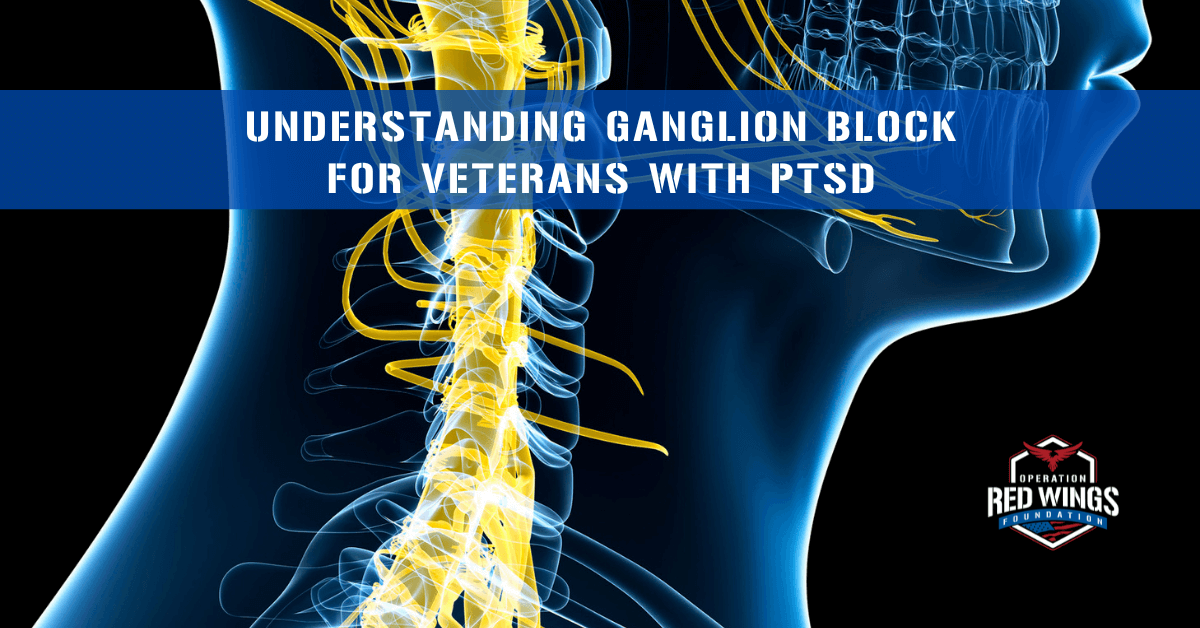Post-traumatic Stress Disorder (PTSD) is a condition that affects many Veterans, causing severe anxiety, flashbacks, and other debilitating symptoms. Traditional treatments, such as therapy and medication, are often effective but may not work for everyone. Recently, the ganglion block, specifically the Stellate Ganglion Block (SGB), has emerged as a promising option for treating PTSD. Let’s explore what SGB is, its benefits and risks, its availability, and why discussing treatment options with a healthcare provider is crucial.
What is a Ganglion Block?
A ganglion block involves injecting a local anesthetic into a group of nerves called the ganglion. The Stellate Ganglion Block targets the stellate ganglion, a collection of nerves in the neck that are part of the sympathetic nervous system, which controls the fight-or-flight response. By temporarily numbing these nerves, the SGB can reduce the heightened state of anxiety and hyperarousal associated with PTSD.
Benefits of Stellate Ganglion Block for PTSD
- Rapid Relief: Many Veterans report a significant reduction in PTSD symptoms within hours to days after the procedure.
- Non-Surgical: SGB is a minimally invasive procedure, typically performed in an outpatient setting.
- Few Side Effects: Compared to long-term medication use, SGB generally has fewer systemic side effects.
- Improved Quality of Life: Veterans often experience better sleep, reduced anxiety, and an overall improved quality of life post-treatment.
Risks and Considerations
- Temporary Relief: The effects of SGB can be temporary, and some Veterans may require repeat injections.
- Side Effects: Though rare, side effects can include temporary drooping of the eyelid, hoarseness, difficulty swallowing, and, in very rare cases, infection or nerve damage.
- Not a Cure-All: SGB may not work for everyone, and its effectiveness can vary.
Availability
SGB for PTSD is becoming more widely available, particularly in VA hospitals and specialized clinics. However, access can still be limited depending on location and healthcare provider familiarity with the procedure. Veterans interested in this treatment should inquire about its availability at their local VA or through a referral to a specialist.
Outcomes and Research
Research on SGB for PTSD is promising but still ongoing. Studies indicate that many Veterans experience a significant reduction in symptoms, but more long-term data is needed to understand the full scope of its effectiveness and potential for integration into standard PTSD treatment protocols.
Discussing Treatment Options with Your Healthcare Provider
It’s essential for Veterans to have an open dialogue with their healthcare providers when considering new treatments like the SGB. Here are some steps to take:
- Gather Information: Learn as much as you can about SGB, its benefits, risks, and success rates.
- Evaluate Current Treatments: Discuss how SGB could complement or replace your current PTSD treatments.
- Ask Questions: Inquire about the procedure, potential side effects, and the provider’s experience with SGB.
- Consider a Second Opinion: If unsure, seek a second opinion from another healthcare provider or a specialist in PTSD treatment.
For Veterans struggling with PTSD, the Stellate Ganglion Block offers a potential new avenue for relief. While it holds promise, it’s essential to weigh the benefits and risks carefully and to discuss all treatment options with a knowledgeable healthcare provider. With the right information and support, Veterans can make informed decisions about their mental health care and work towards a better quality of life.
Stay connected with ORWF by subscribing to our monthly newsletter at https://orwfoundation.org/susbscribe-to-the-newsletter/






